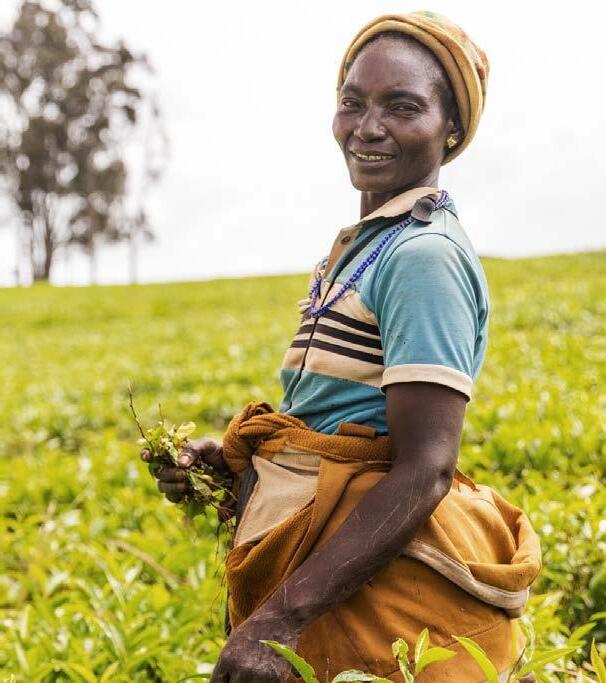

About ISAN Magazine
ISANMagazinewasbornin2021outoftheKnowledgeHubfor OrganicAgricultureandAgroecologyinSouthernAfrica,aproject fundedbyGIZandoperationalisedbyAfricanNGOsthroughfive knowledgehubsmakinguptheKnowledgeCentreforOrganic AgricultureandAgroecologyinAfrica.Theaimofthemagazineis tosupporttheemergenceofastrongregionalnetworkfor agroecologyandorganicsinSouthernAfrica.
Today,weareworkingtowardsasustainablebusinessmodelthat cancontinueitsworktostrengthennetworks,keeppractitioners andconsumersinformedandadvocatefororganicagriculture andagroecologyasaframeworkforfoodsystemsintheregion.
ISANMagazineisdedicatedtobuildinga strongnetworkofinformedcivilsocietyactors andorganisationsacrossthesouthernAfrican regiontoadvocatefororganicagricultureand agroecologyasaframeworkforregionalfood andfarmingsystems.
Editor-in-chief:FortunateNyakanda
ManagingEditor:StefanieSwanepoel
Staffwriters:RabeccaMwila,IsaacMafuel&OdetteMavunga
Production:OdetteMavunga
Layout&design:AlistairMakana
SendyourcontributionsfortheMarch2025editionto secretariat@isan.ifoam.bioby30January2025.For partnershipandadvertisingqueries,pleasecontact chair@isan.ifoam.bio

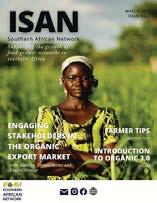
OurPartners:



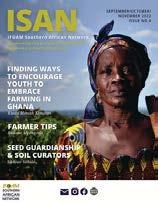
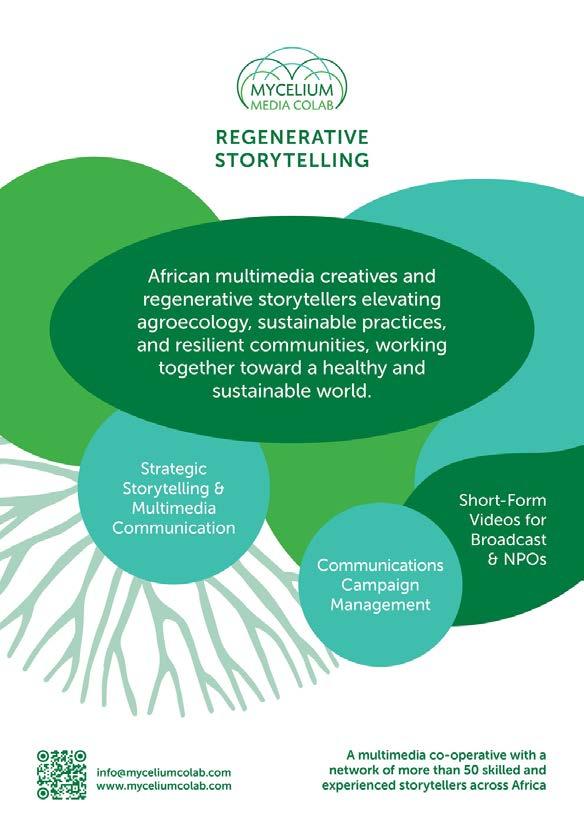
Editor’s Note
ByFortunateNyakanda
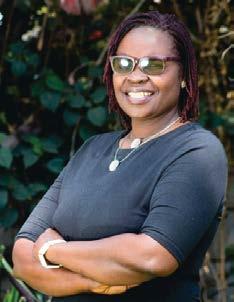
ISANMagazineisdedicatedto buildingastrongnetworkof informedcivilsocietyactorsand organisationsacrossthesouthern Africanregiontoadvocatefor agroecologicalprinciplesand organicagriculturepracticesasa frameworkforregionalfoodand farmingsystems.
WelcometoIssue12ofIsanMagazine!As SouthernAfricapreparesforthenewfarming season,wefocusonstrengtheningfood resiliencethroughdiverse,sustainable farmingsystemsandpracticestonavigate thesechallenges.
Weexplorebiodynamicagriculture,a climate-adaptiveandimpactfulapproach, alongsideagroecologyprinciplesthat enhancesustainability.Thiseditionalso highlightstheimportanceofindigenous cropsandfarmer-managedseeds, showcasinghowtraditionalsystemsincrease resilienceagainstunpredictableweather. Equitablefooddistributionisacornerstoneof foodsecurity,andwedelveintotherole
ofmassmarketsinmakingfoodmore accessible.Additionally,organic agriculturehasdeeprootsinAfrica’s traditionalfarmingsystems,yetthereare numerouschallengesrequiringscientific interventions.TheNetworkofOrganic AgricultureResearchersinAfricaoffers valuableinsightsonthisfront.
Wehopethiseditioninspiresyouto embraceandadvocateforsustainable farmingpractices.Together,wecanpave thewayforamoreresilientfuture.Donot forgettosharethisissuewidely!
Organically
yours
FortunateNyakanda
Agroecology
AgroecologyhasbecomeahottopicinAfricaascivilsociety organisations,NGOsandfarmersinmanyAfricancountriesare demandingthatnationalfoodandfarmingframeworkstransition towardsagroecology.Thisistosupportatransitiontowardssafe andsustainablefoodsystemsthatarefair,equitableandinclusive. Theoverviewbelowdescribesagroecologyanditsprinciples.
Elementsofagroecology
Agroecologyisaholisticapproachtofarmingthat integratesecologicalprincipleswithagricultural practices.Thetermwasfirstintroducedby AmericanagronomistBasilBensinin1928,initially referringtotheapplicationofecologicalprinciples toagronomicresearch.
Overthedecades,agroecologyhasevolvedto encompassabroaderrangeofsocial,cultural andpoliticaldimensions,integratingtraditional agriculturaltechniqueswithmodernscientific knowledge.Thisfieldcontinuestogrow,drivenby theneedforsustainableandresilientagricultural systems.TheElementsofAgroecology,launched ataFoodandAgricultureOrganization symposiumin2018,provideacomprehensive
frameworkforsustainableagriculture. These elementsaddressenvironmental,socialand economicchallengesinfoodproduction systems,promotingpracticesthatenhance foodsecuritywhileminimisingenvironmental impacts.
Together,theseelementsbuildresiliencein farmingsystems,enablingcommunitiesto adapttochangingconditionsandchallenges. Theyencouragebiodiversity,whichisvitalfor ecosystemhealthandsustainability.By emphasisingfarmers’knowledgeand promotingsocialequity,theseelements empowerlocalcommunitiesandfoster inclusivedevelopment.
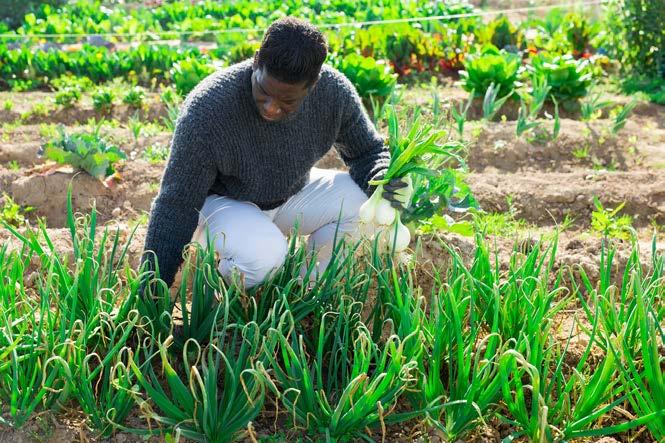
10ElementsofAgroecology
Diversity:Promotingbiodiversityinfarming systemsiskeytoenhancingresilienceto pests,diseasesandclimatevariability.A diversityofcropsandlivestockimprovessoil healthandecosystemfunctioning.
Co-creationandSharingofKnowledge:Itis importanttoengagefarmers,scientistsand otherstakeholdersinparticipatoryprocesses todevelopandshareagricultural innovations.
Synergies:Creatingbeneficialinteractions amongcrops,livestockandotherfarm componentsfostersaself-sustaining ecosystemthatleadstoimprovedresource useefficiencyandreducedrelianceon externalinputs.
Recycling:Recyclingnutrientsandorganic mattertoimprovesoilhealthandreduce wasteisimportant.Emphasisingnatural nutrientcyclingreducestheneedfor syntheticfertilisersandminimises environmentalimpacts.
Resilience:Itisimportanttoenhancethe resilienceofcommunitiesandecosystemsto withstandenvironmentalandeconomic shocks.Thisincludesadaptingcropping systemstochangingweatherpatternsand protectingagainstextremeweatherevents.
Efficiency:Usingresourcesmoreefficiently toreducedependencyonexternalinputs. Thisisespeciallycriticalinthefaceof climatechangeandwaterscarcity.
HumanandSocialValues:Fosteringequity, socialwellbeingandimprovedrural livelihoodsisimportanttoensurethatall communitymembersbenefitfrom agriculturalpractices.Thisinvolves recognisingtherightsandcontributionsof marginalisedgroups,especiallywomenand smallholderfarmers.
CultureandFoodTraditions:Agroecology shouldsupportculturallyappropriatediets andpreservetraditionalagricultural practices.Respectingandincorporating localculturalvaluesandpracticesfosters communityengagementand sustainability.Thishelpstoensurethat agriculturalpracticesaresocially acceptableandculturallyrelevant.
CircularandSolidarityEconomy: Encouragingeconomicmodelsthat prioritisesustainabilityandsocialequity.
ResponsibleGovernance:Thereshouldbe promotionofpoliciesandinstitutionsthat supportsustainablefoodsystems.
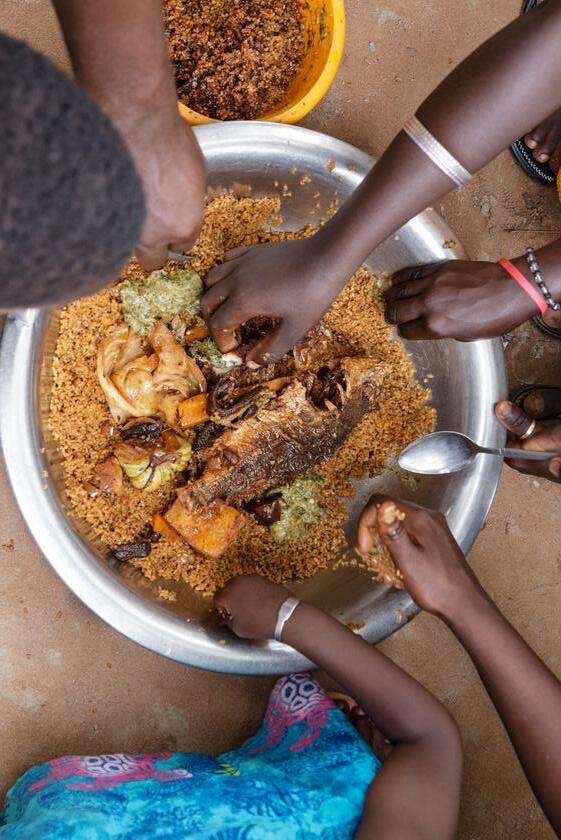
AgroecologyFund’sLearningExchangeon AgroecologicalEconomies
Ourmanagingeditor,StefSwanepoel, attendedthisexcitingeventonbehalfofthe KnowledgeHubforOrganicAgricultureand AgroecologyinSouthernAfrica(KHSA)inmidSeptember2024inZimbabwe.The AgroecologyFundwasfoundedin2011to amplifyagroecologicalsolutionsthrough threeoverlappingniches:
Poolandgrantfundsinsupportof agroecologymovementsthrougha participatoryprocessgroundedbythe expertiseofgrassrootsadvisors.
InfluenceandcollaboratewithnonAgroecologyFunddonorstosupport agroecologymovements.
Providealearningplatformtothe AgroecologyFundcommunity(donors, advisorsandgrantees).
TheFunddoesnotofferopencallsforfunding butworksthroughatrustedadvisornetwork, toensurethatthemaximumamountcan reachprojectsontheground.
TheAgroecologyFunddoesnotengagein policyadvocacybutsupportssocial movementsandcivilsocietyorganisationsin theirpolicyadvocacyatlocal,nationaland internationallevels.Thelearningexchange broughttogethermorethan120organisations fromacrossAfricatoexchangetheir knowledgeandexperiencesrelatedto expandingagroecologicaleconomies.This vibrantfour-dayworkshopwashostedbythe livingandlearningKafundaVillagejustoutside ofHarare.
“Thiswasoneofthemoststimulating andinspiringworkshopsthatIhaveever attended.Icamebackfullofpassionand knowledgeaboutterritorialmarkets,therole ofwomenintheinformalfoodsectorand agroecologicaleconomiesatthecitylevel,” saidStefSwanepoelaboutthelearning exchange.
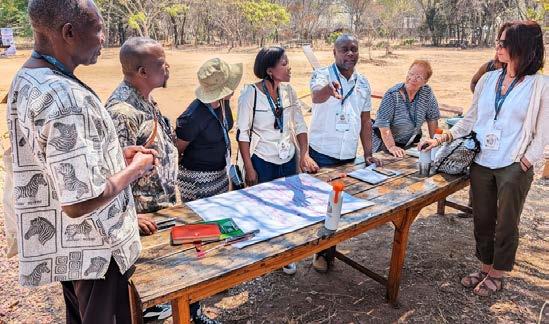
Caption:WorkinggroupattheAgroecologyFundLearningExchange,KafundaVillage,Zimbabwe
Credit:StefSwanepoel

Infuriating Facts
Prolongedload-sheddingsignificantlyslows hydroelectricity-dependentbusinesses
ByRabeccaMwila,StaffWriter
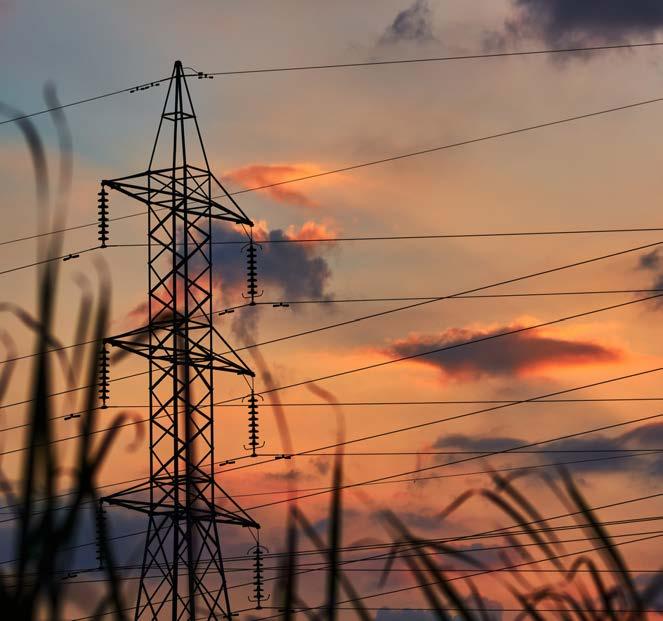
Zambia’seconomyisprojectedtogrowby2.3percentin2024comparedto5.4percentrecorded in2023.Theslowdownismainlyattributedtotheimpactofthedrought,whichhassignificantly reducedelectricitygenerationandsubsequentagricultureproduction.Accordingtothe InternationalFoodPolicyResearchInstitute(IFPRI),theadverseimpactofclimatechangeon Zambia’seconomyisprojectedtoincreaseprogressivelyovertimeandnegativelyaffectfood security.IFPRIfurtherprojectedthatintheabsenceofeffectiveglobalmitigationefforts,climate changehasthepotentialtoreducethecountry’sGrossDomesticProducts(GDP)significantlyby theyear2050.
Currently,Zambiaisgrapplingwithpower deficitchallengeswithreciprocaleffectson theeconomy.Thecountryhasaninstalled hydropowergenerationcapacityofabout 3356.6MW,whichisdepletingrapidlydueto droughtconditions,creatinganestimated750 MWdeficit.Thissituationhastriggered unprecedentedloadmanagementofover 23-hourspowerrationing,theworstinthe country’shistory.Unlessimportsandoff-grid powersolutionssupplementthisshortfall, Zambiawillcontinuefacingchallengesin meetingthe55%energydemandfrommines andthe45%sharedbyotherend-users.
Itisanundeniablefactthattheprerequisite forstrongsocialandeconomicgrowthin thecountryisdependentontheexistence ofareliableandsufficientenergysupply.
Accordingtothecountry’sfinanceand nationalplanningminister,DrSitumbeko Musokotwane,duringhisrecentpresentation ofthe2025nationalbudget,thecountryhas experiencedinflationarypressureoverthepast year,registering15.6%inSeptember2024from 13.1%inDecember2023.Musokotwane observedthatthemaindriverofincreasing inflationisthedroughtexperiencedinthe country,whichhesaidresultedinincreased foodprices.TheKwacha-UnitedStatesdollar exchangeratethatdepreciatedby2.8%has alsobeenafactorinraisinginflation.Despitea tighteningofmonetarypolicy,mostbusinesses continuetobenegativelyaffectedbythe powerdeficit.
Smallandmediumbusinessentrepreneurs whosebusinessesaredrivenby hydroelectricityinvariouspartsofLusaka havelamentedabouttheunprecedented loadsheddingwithacalltogovernmentto deviseaclear,reliableandtimelyplanto averttheenergycrisisinthecountry.Fisho Mwale,founderandchairofYaleloFish Companystates,“Foruswecontinuously aspiretoensurethatweputonthemarket freshproductsofhigheststandard.
Ourproblemisourconsumers,they…buyin smallerquantitiesmeaningwearepushing lesstonnageonthemarketbecausepeople arebuyingonaday-to-daybasis.”
PoultryAssociationofZambiaChiefExecutive OfficerDominicChandaobservedthatthe sectoranticipatesminimalgrowthandpoor profitmarginsthisyearduetoincreasedcosts ofproductiontriggeredbytheswitchto alternativesourcesofenergypropelledby prolongedloadshedding.Chandaexplained thattheshifttoalternativeenergyhastripled productioncostsleadingtomanyproducers shunningthebusiness.Henotesthat,“Forus thedevastatingimpacthasbeenondifferent levelsalongsupplychain.Ifweconcentrateon productionperspective,wehavehatcherswho havegoneintousingdieselandother alternativesourcesofenergyincreasing three-timesthecostofelectricity.”Chanda observedasignificantreductioninthe purchaseofchickensduringtheperiodof extendedloadsheddingasconsumersareno longerbuyinginbulk.
AndMemoryBanda,aLusakaresidentsaid poweroutageshavecompromisedpeople’s diet.“Wecannolongerbuyhighlyperishable foodproductssuchfreshmeatandfish becausewehaveprolongedloadshedding,” Bandasaid.Thereisnodoubtthatthe negativeimpactsofclimatechangewill continuetoadverselyaffectZambia’skey economicsectorssuchasenergyand agricultureaffectingfiscalgrowthandhealth ofthepeople.
Immediateclimateaction,includingpower imports,renewableenergymixandother responsesmustbeemployedtomitigatethe impactsoftheenergydeficits.
SurvivingTheDrought
HowElNiñoandClimateChangeareReshaping LivesinSouthernAfrica
ByKabeloMoratwe,CitizenJournalist
TheongoingdroughtinLesothoandotherSouthernAfricancountries,exacerbatedbytheElNiño weatherphenomenon,isastarkreminderofthedeepeningclimatecrisisanditsdevastatingrealworldimpacts.Formillionsofpeoplelivingintheseregions,climate-inducedhardshipsarenot distantprojectionsbutadailystruggleforsurvival.Whatwasonceapredictablecycleofdryand wetseasonshasmorphedintoincreasinglyseveredroughts,threateningfoodsecurity,livelihoods andsocialstability.ElNiño,anaturalclimateeventcharacterisedbywarmer-than-averagesea surfacetemperaturesinthePacific,usuallybringsdrierconditionstoSouthernAfrica.However,the severityofthecurrentdroughtisamplifiedbythebroaderandmorealarmingtrendofclimate change.AccordingtothelatestreportfromtheIntergovernmentalPanelonClimateChange(IPCC), extremeweathereventslikeElNiñoarebecomingmorefrequentandintenseduetoglobalwarming.
InLesotho,wheremostofthepopulation reliesonsubsistenceagriculture,theimpact hasbeendevastating.Cropssuchasmaize, wheatandsorghumarefailingdueto insufficientrainfall.Thishasledto widespreadfoodshortages,leavingfamilies inruralareasstrugglingtosurviveonmeagre rationsordependentoninconsistent internationalfoodaid.“Iplantdifferentcrops inmyyard,frombeans,beetroot,pumpkin, potatoes,anddifferentkindsofspinach. Threeyearsago,mybeanyieldwouldfill three20-litrebuckets;butrecently,I’monly gettingone10-litrebucket.Iusedtosellsome ofthevegetablesinmygardentobuy householdthingslikesoapbutnowtheyield istoosmall,sowecan’tsell.Thesituationhas leftmyfamilysuffering.Wehavenotreceived anyassistancefromgovernmentinalong time,wearesufferingduetothis
drought,”saysMmatiisetsoTsoinyane(54) aresidentandsmallholderinHa ChonapasevillageintheLeribeDistrictof Lesotho.
Farmershavereportedcatastrophiclosses, withcropfailureratesexceeding60%in someareas.Aslivestockcompeteforwhat littlewaterandgrazinglandremain,many smallholderfarmersaresellingtheiranimals atdepressedpricesorwatchingthemdie. Theselosseshaverippleeffects,erodingthe economicstabilityoffarmingcommunities andpushingthemdeeperintopoverty.
“People living in the highlands are most vulnerable to the effects of this drought as they depend on water from the mountains for consumption, livestock, farming and to carryouthouseholdchores.
Thishascausedalotoffrustrationin communitiesasthereseemstobenosense ofurgencytoattendtotheissuefromthe government.Youngpeoplehavestarted initiativesforclimatechangemitigationand educatingcommunitiestobebetter preparedforsuchevents,buttheyare experiencingchallengesduetohideous administrativeprocessesofhavingtheir movementsrecognizedbygovernment,this leadstoevenmorefrustrationleadingto youngpeoplemigratingtolowerlandsto seekemployment,leavingthecontinued livedrealitybehind,”saysRaymondMosoue, FounderandPresidentofRayofSunshine FoundationLesotho.
Asthedroughtcontinues,itssocialimpacts aredeepening.InLesotho,rural-urban migrationisincreasingasfamiliesleavetheir homesinsearchofwork,waterandfood. Thismigrationisplacingpressureonalready overstretchedurbaninfrastructuresand services.
Aswellsdryupandsanitationdeteriorates, communitiesareatgreaterriskof waterbornediseases.InLesotho,thelackof accesstocleanwaterhasledtooutbreaks ofcholerainsomeregions,furtherstraining healthservicesthatarealreadyunderresourced.
Formillionsofpeople,theclimatecrisisisnot anabstractissue—itisamatteroflifeand death.Theclimatecrisisisdisproportionately affectingthemostvulnerablepopulations, andwithoutimmediateandrobust intervention,thesecommunitieswillcontinue tosuffer.Ifmeaningfulmeasuresarenot takensoon,futureElNiñoevents,combined withrisingglobaltemperatures,willonly bringmoredevastation.Forthepeopleof Lesotho,adaptingtothesenewclimate realitiesisanecessity,notachoice.Whether theworldrespondswiththeurgencyand compassionrequiredwilldeterminethe futureoftheseregions.
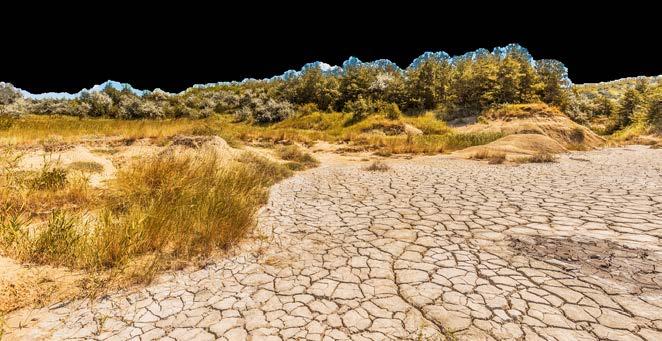
Future of Food LookingtothePastfortheFutureofFood: IndigenousCrops
andTheirRoleina Changing
Climate
ByIsaacMafuel,
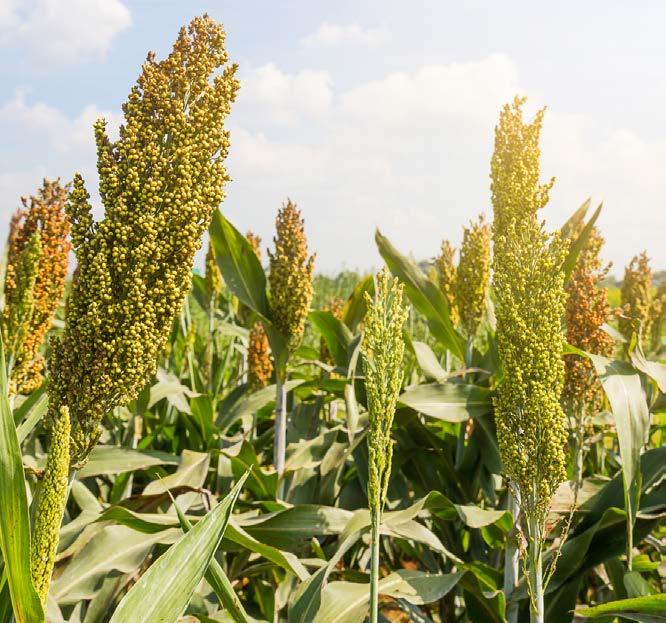
Astheeffectsofclimatechangeintensify,farmersacrossMalawiaresearchingfor sustainablewaystosafeguardtheirlivelihoodsandensurefoodsecurity.The 2023/2024growingseason,heavilyimpactedbytheElNiñophenomenon,brought erraticrainsandprolongeddryspells,posingsignificantchallengesforagriculture.To exploretherolethatindigenouscropscanplayinthefutureofMalawianagriculture,I satdownwithKondwaniKhonje,anAgroecologyConsultantwithextensiveexperience workingwithfarmer-managedseedsystems.Hisinsightsshedlightonwhythese crops,oftenperceivedastraditionaloroutdated,mayholdthekeytosurvivingand thrivinginanunpredictableclimate.
StaffWriter,featuringinsightsfromKondwaniKhonje,AgroecologyConsultantin Malawi
Theimportanceoffarmer managedseedsystems
“SeventypercentoffarmersinMalawidepend onfarmer-managedseedsystems,”Khonje explains,“Thisshowsjusthowcriticalindigenous seedsareforensuringfoodsecurity.”Farmermanagedseedsystems,whichrelyonthe exchange,selectionandconservationoflocally adaptedseeds,havebeenpasseddown throughgenerations.Thesesystemsoffer farmersavarietyofcropsthatarewell-suited tothelocalenvironmentalconditionsandmore resilienttoclimatevariability.
Khonjepointstothe2023/2024growingseason asproofofthisresilience.Whilemany commercialhybridseedsfailedtothriveunder theerraticweatherconditionsbroughtbyEl Niño,indigenouscropsperformedrelatively well.“Farmerswhogrewadiversifiedselection ofindigenouscropsandcropvarieties managedtoharvestbetteryields,eventhough theseyieldswerebelowthepotentialofa normalseason.”
Theroleofindigenouscropsin MzimbaNorth,Malawi
InMzimbaNorth,whereKhonjehasworked closelywithlocalfarmers,severalindigenous cropsstoodoutfortheiradaptability.Small grainslikemillet(wathanga,mutuwila)and sorghum(viswesi,vituwa)faredparticularly well,asdidindigenousmaizevarietiessuchas bingo,kafula,andkamupalapate.Legumeslike Bambaranut(masumbiyaholo,ziswesiand zifipa)andgroundnuts(tchailosi)alsoshowed remarkableresilience,yieldingmorethantheir hybridcounterparts.“Thesecropshavebeen cultivatedforgenerations,usinglocal knowledgetoselectvarietiesthatcanendure harshweather,”Khonjesays.“Theyaredeeply embeddedinthecommunity’sagricultural heritage.”
Shiftingperceptionsandchallenges
Despitetheirprovenbenefits,indigenouscrops areoftenseeninanegativelight.“There’sa misconceptionthatthesecropsare‘backward’ orlessproductivethanmodernhybrids,”Khonje notes.“Thisperceptionhasbeenreinforcedby agriculturalextensionprogrammesthat emphasiseimprovedcommercialcrops,often tothedetrimentoflocalseedsystems.”Infact, Khonjearguesthatrelianceonhybridscan sometimesleadtodisasterinseasonslikethis one,whereunpredictableweatherdisturbs monocultures.Incontrast,thediversityand adaptabilityofindigenouscropsprovidea bufferagainstcropfailure.Yet,alackofpolitical willandpoliciesrecognisingfarmers’rightsto save,sellandexchangetheirownseeds threatensthesurvivaloftheseindigenousseed varieties.“ManyorganizationsinMalawiare workinghardtoconserveandmultiply indigenousseeds,butthere’slimitednational coordination.Withoutgreatercollaborationand strongerpolicysupport,werisklosingthesevital resources”,hewarns.
Apathforward:revitalizing indigenouscrops
Organizationssupportingfarmer-managed seedsystemsarefocusingonimproving accesstoandthequalityofindigenousseeds. Theyaretrainingfarmersingoodseed productionpractices,advocatingforpolicy reforms,andraisingawarenessofthe importanceofmaintainingseeddiversityinthe faceofclimatechange.Khonjeisoptimistic that,withtherightsupport,indigenouscrops canonceagaintakecentrestageinMalawian agriculture.“Weneedtoshiftthenarrativeand seethesecropsasthefuture,notthepast.They areresilient,nutritiousandadaptable—exactly whatweneedinachangingclimate.”
Farming Systems WhatisBiodynamicAgriculture?
ByFortunateNyakanda,Editor-in-Chief,ISANMagazine
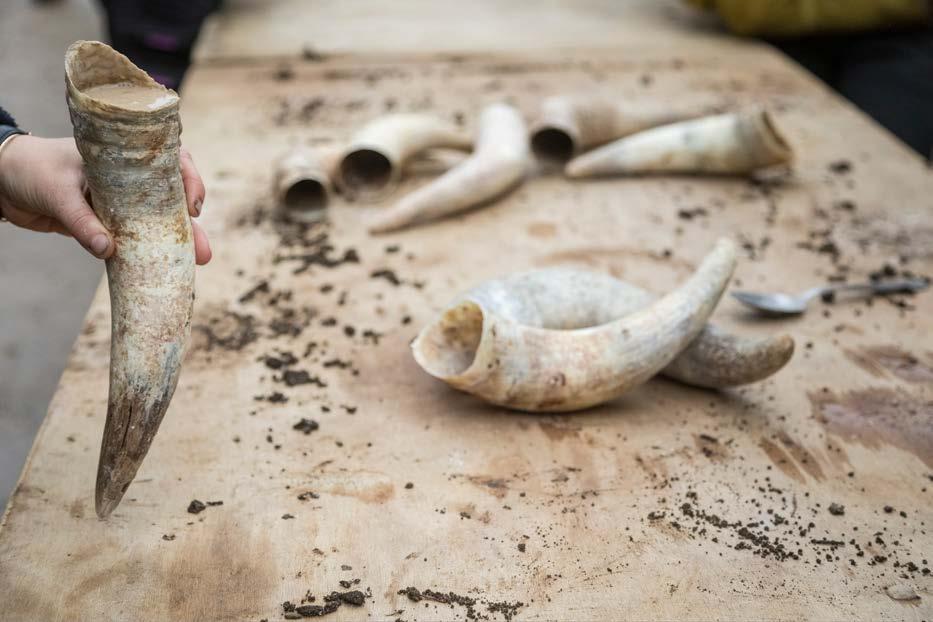
Biodynamicagricultureisaholistic,ecologicalandethicalapproachtofarming. Developedin1924byAustrianphilosopherRudolfSteiner,whocombinedscientific understandingwithspiritualinsights,biodynamicagricultureisasustainablefarming systemthatviewsthefarmasalivingorganismandthatgoesbeyondorganic methodstoincorporatespiritualandcosmicprinciples.Itaimstomaintainthebalance andhealthofafarmingsystemwheresoil,plants,animalsandhumansare interconnectedandseenasaself-sustainingsystem.Biodynamicpracticesalsofocus onthespiritualwellbeingofthefarmerandvitalityoffarmproducts.
Keyelementsofbiodynamicagriculture
•
Holisticapproach:Soil,plants,animalsand humansaretreatedasinterconnected partsofasinglesystem.
•
• Theherbpreparationsareappliedto compost,fieldsandcropstostimulate biologicalprocesses.
•
Organicpractices:Thephilosophyand practicesalignwithorganicagriculture principlesofCare,Ecology,Healthand Fairness.Biodynamicfarmingprohibitsuse ofsyntheticpesticides,herbicides,chemical fertilizers,andgeneticallymodified organisms(GMOs).Naturalmethodsand biodiversityareusedtocontrolpestsand diseases.Useofbiodynamicsprays,suchas hornsilica,areusedtostrengthenplants’ naturalimmunitytopestsanddiseasesand naturalmethodsforpestcontrol,suchas plantinginsectrepellentplantslikemarigold orneemaroundcropfields,areused. Biodynamicpreparations:Uniquetothis methodistheuseofspecificpreparations toenhancesoilandplanthealth.Specific herbslikeyarrow,chamomileandstinging nettleaswellasmineralpreparationsare usedtoenhancesoilfertilityandplant growth.
•
Astrologicalinfluences:Astrological influencesmatterinbiodynamicagriculture. Farmersmustconsidertheinfluenceof cosmicforces,particularlylunarand planetaryrhythms.Farmersplant,cultivate andharvestcropsinaccordancewith astrologicalcalendars,believingthatthese naturalrhythmsaffectplantvitality.
Biodiversity:Farmingpracticesfocuson integratingavarietyofplantsandanimals tocreateabalancedecosystem.Animals contributetosoilfertilitythroughmanure, whilediversecropshelpmaintainsoilhealth andattractbothbeneficialinsectsand pollinators.Thefarmsengageinseed saving,particularlywithheirloomorlocal seedvarieties,tomaintaingeneticdiversity andproduceplantsthatarewell-adapted tolocalconditions.
Toensurethattheprinciplesofbiodynamicfarmingareupheldandclearlycommunicatedto consumers,biodynamicproductsarecertified.Thisalsohelpstobuildtrust,openmarket opportunities,protectthebiodynamicbrandandguaranteesthatproducersarefollowing sustainableandethicalfarmingpractices.Certificationisundertakenbyorganisationssuchas Demeter,SoilAssociationandEcocert.
Smallholderfarmerscanapplybiodynamicagricultureintheireverydaylivesbyintegratingits coreprinciplesandpracticesintotheirfarmingsystems,evenonasmallscale.Theycanstartby incorporatingjustoneortwobiodynamicpractices,suchascompostingorfollowingthelunar plantingcalendar,andgraduallyexpandtheirbiodynamicmethodsovertime.
Moreinfoaboutbiodynamicagricultureclickhere
Movements & Advocacy

Inthissection,weprofiletheinnovativeworkundertakenbySouthernAfrica organisations,nationalmovementsandnetworkstosystematicallytransformourfood andfarmingsystems.Theyworktirelesslyatmultiplelevelstoreawakenourconnection withnature,raiseawarenessoftheneedforagroecologicalapproachestoagriculture andengagewithfarmers,farmerorganisations,policymakers,consumersandother stakeholderstosupportatransitiontosustainablefoodsystems.
PeopleofFaithCaringforaLivingEarth
BytheSouthernAfricanFaithCommunities’EnvironmentalInstitute(SAFCEI)
SAFCEIisamulti-faithenvironmentaljusticeorganisationsupportingandworkingwithfaithleaders andtheircommunitiesacrossSouthernandEastAfricatoraiseawareness,buildskillsandtake decisiveactiononeco-justice,sustainablelivingandclimatejustice.www.safcei.org
SAFCEIworkswithpeopleofallfaithsandnone inemphasisingaspiritualandmoral imperativetocarefortheEarthandallliving creatures.Theorganisationactivelyspeaksout oneco-justiceissues,callingforgreater leadershiponethicalactionandholding decision-makersaccountable.Through capacitybuildingonadvocacyand campaigning,andpracticalimplementation ofenvironmentalchange,SAFCEIsupports faithleaderstobeagentsofchangeintheir communities.
Thethreeprogrammeareasthatthe organisationfocusesonareEnergyand ClimateJustice,FoodandClimateJustice,and AnimalJustice.TheFoodandClimateJustice programmeseekstoempowerfaith communitiestobetterunderstandandto activelyadvocateforagroecologicalsystems thatpromotesustainableconsumption, nature-basedfarmingandhelptobuild climateresilience. Becausethedominant industrialglobalfoodsystemiscontributingto
climatecollapse,socialinjustices,ecological devastationandhealthpandemics,especially inthecontextofAfrica,SAFCEIworkstooppose destructivefoodsystemsincludingfactory farming,industrialagricultureandgenetically modifiedorganisms(GMOs),whileadvocating forsustainable,equitablealternatives.
Throughadvocacy,campaignsandsocial networks,andleveragingpartners’activitiesto reachwiderfaithcommunitiesandcivilsociety networks,SAFCEIpromotestheapplicationof ecologicalprinciplestoagriculturalsystems andpractices.Theprogrammealsoaimsto raiseawarenessoftheimpactsofthe industrialisationoffoodsystemsonhumanand environmentalhealth,itaimstostrengthenthe capacityoffaithleadersandtheircommunities toadvocateforfoodandclimatejustice,andto addresskeyindustrialfoodsystempoliciesand practices.Thehopeisthatthiswillbedoneby practicallysupportingsustainablefarming, ethicalfoodproductionandtransparencyin foodsystems.
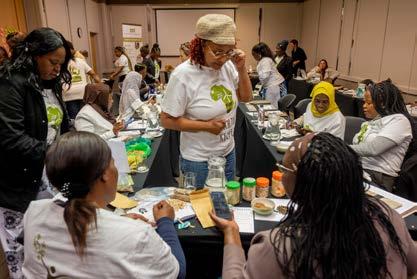
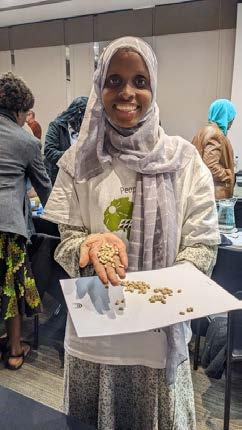
Amongstotherareasofwork,faithleadersare trainedontheprinciplesofagroecologyand foodsovereignty,theimportanceofspiritual, nutritionalandtraditionalconnectionswith indigenousfoods,andtheimpactsofthe industrialfoodsystemonclimatechangeand humanandenvironmentalhealth.SAFCEIalso invitesfaithleaderstopartakeinseedswaps, duringwhichtheseedsofindigenousplants andfoodsareexchangedbetweenfaith leadersandorganisers,alongwithtipsfor companionplanting,harvesting,consumption andstorageofindigenousfoods.
Faithleadersarealsosupportedingrowinga sharingcommunitythroughparticipationinthe globalGreenActionWeekcampaign.During September,OctoberandNovember, inspirationalfaithleadersfromKenya,Malawi, SouthAfrica,Tanzania,Zambiaandbeyondare showcasingsustainableconsumption practicesthroughseedswaps,anindigenous foodfestival,marches,foodgardeningandtree planting,urbanagriculture,bestpractice demonstration,andmore.
Additionally,SAFCEIhostsFaithLeader EnvironmentalAdvocacyTrainings(FLEATs), whicharepeer-learningnetworks empoweringpeopleoffaithleadersto advocatefortheenvironmentandjusticein theircommunities.
Faithcommunitiesarecallingonindustry andgovernmenttoradicallytransformthe foodsystem,torestoreourspiritual connectiontofoodandfarming.Wealso urgedecision-makerstoimplementethical, socialandenvironmentallyjustfood governance.SAFCEIandfaithleadersfrom acrossAfricahavewrittenanopenletter callingontheBillandMelindaGates FoundationandotherfundersoftheGreen Revolution(AGRA)toacknowledgethe failuresoftheirinterventionsinAfrica’sfood andfarmingsystemsandtomake reparationsfortheresultingecologicaland socialdamage.Youcansignontotheopen lettertotheGatesFoundation,demanding reparationsfordamagescausedbyitsGreen Revolution.
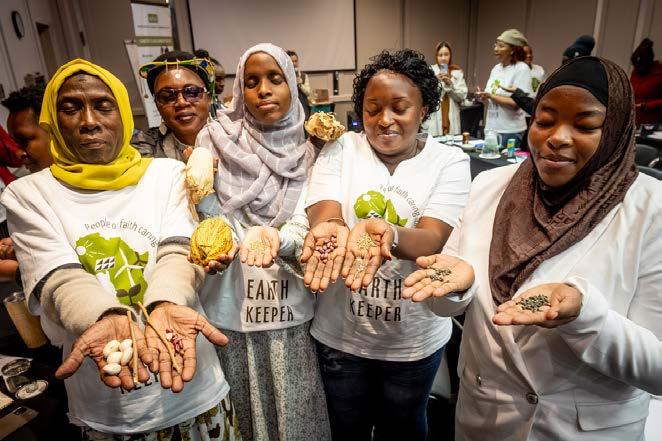
WaterSchoolAfrica
WaterSchoolAfrica(WSA)isacollaborativepartnershipfocusedonimprovingwaterliteracyand promotingwater-holdingpracticesacrossAfrica.Byworkingcloselywithcommunities,WSAaimsto enhancetheirabilitytomanagewaterresourcesinharmonywiththenaturalwatercycle, regeneratewatercatchments,andimproveaccesstocleanwaterforbothpeopleandecosystems.
Visionandobjectives
WSAisbuildinganetworkthatralliesindividuals andcommunitiesaroundthethemeofwater conservation,seekingtogrowamovementthat fostersenvironmentalresilience.
Theinitiativepromotesrainwaterharvestingand othersustainablewatermanagementtechniques, empoweringcommunitiestobecomecustodiansof theirwaterresources.
Principlesofeffectiveness
WSA’sworkisguidedbysixprinciples:

Community-centredfocus:Prioritisingpractices thatallowcommunitiestoretainwaterintheir landscapes.
Decentralisation:Ensuringthatprocessesare drivenandownedbythecommunities.
Inclusivity:Activelyinvolvingwomen,youthand meninallinitiatives.
Documentationandsharing:Recordingand sharingknowledgetofosterlearningand scalability.
Peerlearning:Encouragingknowledgeexchange andimplementationacrossalllevels.
Collaborativegrowth:Buildingpartnerships organicallyandambitiouslywithother stakeholders.
Formoreinformationandadditionalresources, clickhere
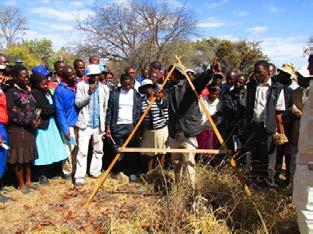

Caption:SarahTobaiwatrainedinwaterharvestingbyZephaniahPhiri throughMuondeTrustin2013 Credit:WSA
Caption:Aswalecollectingrainwatersothatitsinksintotheground Credit:WSA
Caption:FarmerslearninghowtomakeanduseanA-frametopegcontours inordertodigswalesforharvestingrainwaterintotheground Credit:WSA
Delving Into Markets
Mbaremassfoodmarkets:anintegral componentofthesocialfabric
ByCharlesDhewa
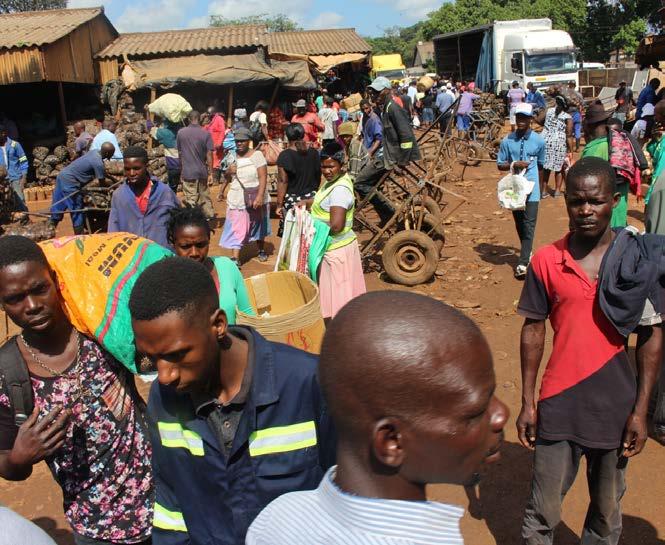
Update:MbareMusikaTerritorialMarketexperiencedalarge-scalefireon9October, reportedlystartedbyanexplodinggastank.Thefirespreadrapidlycausingmillionsof dollarsindamageanddestroyedthelivelihoodsofmorethan5000traders.Thistragic incidenthighlightsthevulnerabilityoflocalbusinessesandcommunitieswhorelyonsuch marketsfortheirdailyincomeandsustenance
ISANMagazineextendsitswishesforafullrecoveryofthisvibrantmarketandcallsonthe Zimbabweangovernmenttoinvestineconomichubssuchasthismarketbyproviding thenecessaryinfrastructuretoensurethatatragedylikethisneverhappensagain.Learn moreaboutthefirehere
Caption:MbareMarket,HarareZimbabwe Credit:CharlesDhewa
MbareMarket,alsoknownasMbareMusika,is thelargestandmostvibrantmarketinHarare, supportingmorethan5000tradersandtheir families.Locatedintheoldesthigh-density suburb,Mbaretownship,themarkethasgrown organicallysinceitsestablishmentin1907.It servesasamajorhubforfresh,driedand processedproduce,smalllivestockandnonagriculturalitemssuchasuniformsand protectivewear.Mbareactsasanaggregator, distributorandpricesetterforothermarkets acrossZimbabwe,attractingwholesalers, retailersandtradersfromvariousprovinces.The markethandlesgoodsnotfoundinformal markets,includinglower-gradeproduce,while alsoofferinghigh-gradeproducts.Mbare’sdaily financialturnoverreachesmillionsofdollars, drivenbytransactionsinfreshproduce,livestock andothergoods.
Mbaremarketdailyoperations
Mbaremarkethasdifferentsegments–the farmers’marketthatopensat5amdailyand closesaround1pmandwholesaleandretail marketsthatbothopenat6amandcloseat 6pmand5pmrespectively.Boththeretailand wholesalemarketshaveplusorminus3500 traders,dependingontheseasonsandinline withthemorethan80agricultural commoditiestradedinallthreemarkets. MillionsofUnitedStatesdollarsarebelievedto circulateinthismarket.
Deliveryofcommoditiestothe market
Theprimarymodeoftransportfordelivering commoditiestothemarketare1-30-tontrucks, whichparkaroundthemarket,awaitinghire. Eachtransporterestablishestheirown relationshipsandemploysrunnerstofind businessopportunities.Tradersfrequentlyuse publictransporttotraveltofarmingareasin searchofproduce.Onceaconsignmentis ready,theycontactthetransporterfordelivery. Additionally,manycommoditiesare transportedtothemarketfromdistantrural areasusinglong-distancebuses.
Packagingpracticesandtrends inMbareMarket
Over45%ofpotatopocketssoldinMbarecome fromlocalsources.Specialistsimport packagingmaterialsatpricessignificantly lowerthanthoseofferedbyformalcompanies. Often,thesamepocketsareusedtopackagea varietyofproducts,includingonions,butternuts, garlicandothers.Additionally,vendorsuse plasticpolybagsforpackingchillipeppers,okra andothercommodities.Mbarehandlesa substantialvolumeofvarioussizesofsacks distributedacrossthecountry.Themarket accountsformorethan50%ofthe50-kilogram bagsincirculation,includingbothnewand reusedsacks.Companiesthatimportbran,flour andfeedstockoftendisposeoftheirusedsacks atMbare.Biggerpackagingsacksarepreferred overthesmalleronesastransportchargesare persackratherthantotalvolume.Wooden cratesindifferentsizesarealsousedforhighly perishableproducesuchastomatoes.These woodencratesareslowlybeingreplacedby plasticcrates.
Unitsofmeasurementin commoditytrading
Unitsofmeasurementforcommoditiesare primarilyinfluencedbyconsumerpreferences andaffordability.Someconsumerspurchase forhouseholduseandfavoursmaller packaging,whilethosebuyingforresalein smallermarketstypicallyoptforlarger packages.Retailersalsodictatemeasurement units;forexample,dozensarethestandardfor greenmealies,whilebundlesofleafy vegetablescontaining200-220leavesare commonlyused.Thesebundlesareoften brokendownforstreetvending,withsizes dependingonproductavailability–largerunits duringperiodsofsurplusandsmallerones duringshortages.Formalmarkets,suchasretail shops,preferbundlesweighingbetween850 gramsand1kilogram.Tominimizedouble handling,leafyvegetablesmustgodirectlyto organisedmarkets.
Certaincommoditiesareoftensoldbyquantity ratherthanweight.Thetrendofheapingreflects ademandforaffordablemeasurements, particularlyamongconsumerslivingfromhand tomouthwhocannotaffordlargevolumes.For instance,buyingheapedpotatoescanyield moreproduct–typically,8to9heapsmay providemorethanasingle15kilogrampocket, savingconsumersaroundUS$12.Tostreamline thebuyingprocess,marketactorshave collectivelyagreedonstandardmeasurements toeliminatetheneedtoweighcommoditiesfor eachtransaction.Thisagreementpreventslong queuesofbuyerswaitingfortheirconsignments tobeweighed.Consequently,themarkethas establishedaconsistentunderstandingbased oncommonmeasurements,facilitating agreementandsatisfactionamong participantsfamiliarwiththesestandards.
Tinsarecommonlyusedtomeasurevolumes thatcannotbeeasilycounted,withsizes typicallyrangingfrom5-20litres.
However,thismethodofmeasurementcanbe inconsistent,astinsizesvary.Somefeature brimsandcollarswhileothersdonot,whichcan oftenfavourtheseller.Tinsmayalsobe unsuitableforsmallcommodities,suchassmall fishandsoyachunks,whichdonotfillthegaps effectively.Additionally,indigenouschickens cannotbesoldbyweightduetotheirlightness. Intheseinstances,itisessentialtoconsider otherbenefitsbeyondmereconsumption,such assuperiornaturaltaste,motheringability,egg productioncapacityandresistancetopests anddiseases.
Informationsharing
KnowledgeTransferAfrica,throughitsEMkamboplatform,collectsanddistributes weeklymarketinformationforMbareMarket. Thisdataincludesthequantitiesof commoditiesarrivingatthemarketandtheir respectivesellingprices.Theinformationhelps bothbuyersandsellersmakeinformed decisionsabouttheoptimaltimestobuyorsell theirproducts.
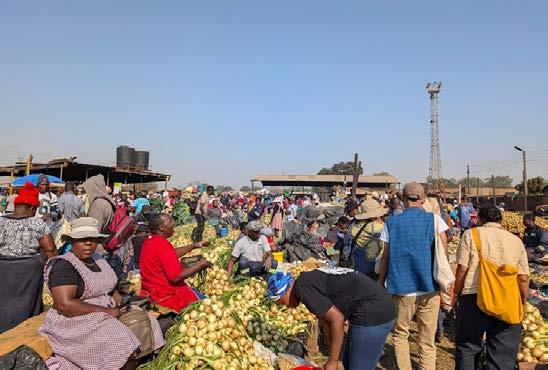
Caption:MbareMarket,HarareZimbabwe Credit:CharlesDhewa
ProducefoundinMbaremarket
Savedseedsandgrainofdifferentvarietiesof indigenousrice,(shelledandunshelled),cowpeas, groundnuts(freshanddry,shelledandunshelled) Bambaranuts(freshanddry,shelledandunshelled), maize,sorghum,Pearlandfingermillets,wheat, sunflowers,popcornandsoybeans.
Processedproduce:Driedvegetablesmostlyof indigenousnature,processedandpackagedlocalrice, milledsmallgrains,cookedanddriedgreenmealies.
Freshvegetablesandotherfreshproduce:Kale, cabbage,mustard,greenbeans,peas,tomatoes, onions,Irishpotatoes,sweetpotatoes,yams,cassava tubers,Okra,ginger,garlic,babymarrow,butternuts, greenmealies.
Herbs:Onions,shallots,coriander,radish,leeks,green, red,yellowpepper,chilies,parsley.
Fruits:Bananas,pawpaws,coconut,strawberries, mangoes,avocadopears,apples,plums,pears, oranges,pineapples,blueberries(somefruitsare boughtfromfarmers,andsomeareimported), watermelons,cucumbers.
Non-timberforestproducts,includingindigenous fruits,tamarind,Mopaneworms.
Livesmalllivestock:Free-rangechickens,guineafowls, pigeons,broilerchickens.
Others:DriedKapenta.
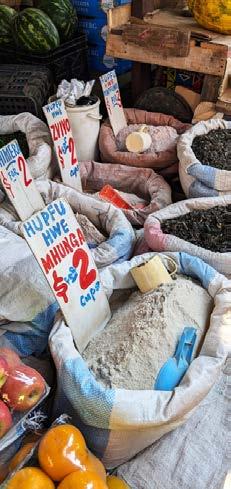
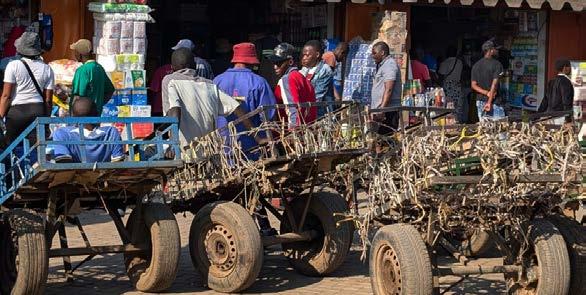
Caption:Runnersandtheirtrolliesforhire,MbareMarket,Zimbabwe Credit:StefSwanepoel
Caption:Cupmeasurements,MbareMarketHarare Zimbabwe Credit:StefSwanepoel
Soil Life
Buildinglifeinthesoil
ByRabeccaMwila,StaffWriter&KCOADigital KnowledgeOfficer
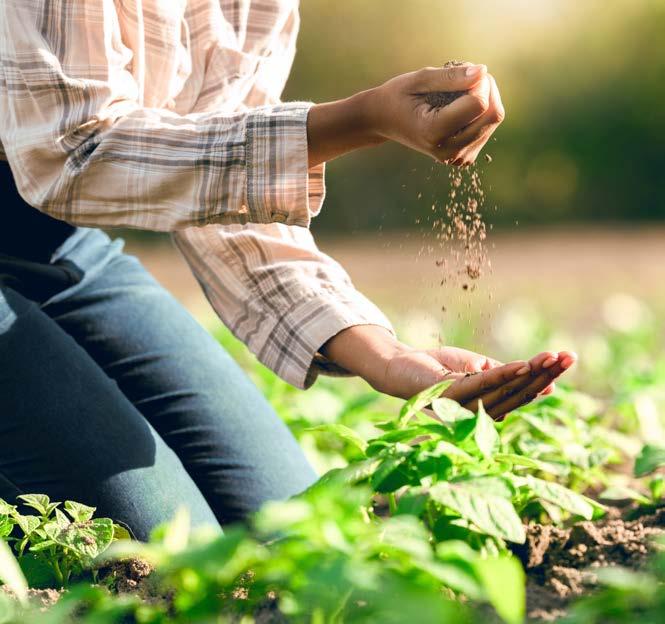
ThisblogappearsontheKnowledgeCentre forOrganicAgricultureandAgroecologyin Africa(KCOA)knowledgeplatform.Youcan accessmanyotherblogsandinnovative knowledgeproductsbyregisteringonthis platform.kcoa-africa.org
Soilsareanessentialelementofplantgrowth.Itsqualitydeterminesplant growth,waterflowandstorage.Healthysoilsfilterpollutantsandsupport biodiversityandecologicalbalance.
Whatissoilhealth?
Soilhealthisabroadtermthatfocusesonthebiologicalaspectofsoil.Healthysoilsare characterisedbyabalancedecosystemofmicroorganisms,fungiandearthwormsthatworkto breakdownorganicmatterandcyclenutrients.Thekeytosuccessfulsoilhealthisthebuild-upand correctmanagementoforganicmatter.
Characteristicsofhealthysoilsinclude:
Goodstructurethatallowsairandwaterto circulate.
Highlevelsoforganicmattercontent.Active soilorganismslikebacteria,fungi,andworms. Theabilitytoretainmoistureandnutrients.
Poorsoilsencourageoccurrencesofdisease andpestinfestations,andpooryields.Whatis soilfertility?Soilfertilityreferstothesoil’s abilitytoprovideessentialnutrientstoplants intherightamountsforoptimalgrowth.
Fertilesoilscontain:
Macronutrients:Thesearenutrientsrequiredin largerquantitiessuchasnitrogen,phosphorus andpotassium.
Micro-nutrients:Thesearenutrientsrequiredin smallerquantitiessuchasIron,zinc,manganese andcopper.
Organicmatter:Decomposedplantandanimal materialthatprovidesnutrientsandimproves soilstructure.
Fertilityalsodependsonthe soil’scapacityto:
Retainandreleasenutrientstoplantsas needed.
Holdwaterwithoutbecomingwaterlogged Preventerosionandmaintainstructure.
Practicestoimprovesoilhealthand fertility
Incorporateorganicinputs:Incorporatecompost, manureorgreencovercropsintothesoilto increaseorganicmatterandimproveitsfertility, structureandmicrobiallife.
Rotatecrops:Croprotationhelpsmanage nutrientdepletion,enhancesbiodiversityinthe soilandhelpscontrolpets.
Practiceconservationtillage:Reducingtillage minimizessoildisturbance,preservessoil structureandreduceserosion.
Usecovercropping:Covercropshelpprevent erosion,fixnitrogenandaddorganicmatter.
Balancefertilisation:Properuseoforganic fertilisersensuresthatplantsgettheright nutrients.
MaintainpHLevels:Regularsoiltestingandthe applicationoflime(foracidicsoils)helpmaintain therightpHfornutrientavailability.
Managewater:Appropriateirrigationand drainagesystemspreventwaterloggingand salinityissueswhilepreservingthesoil’sstructure.
Downloadthisresourceinposterformathere.
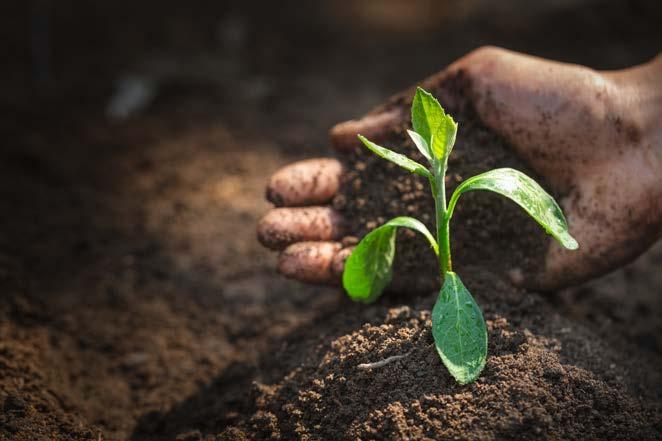
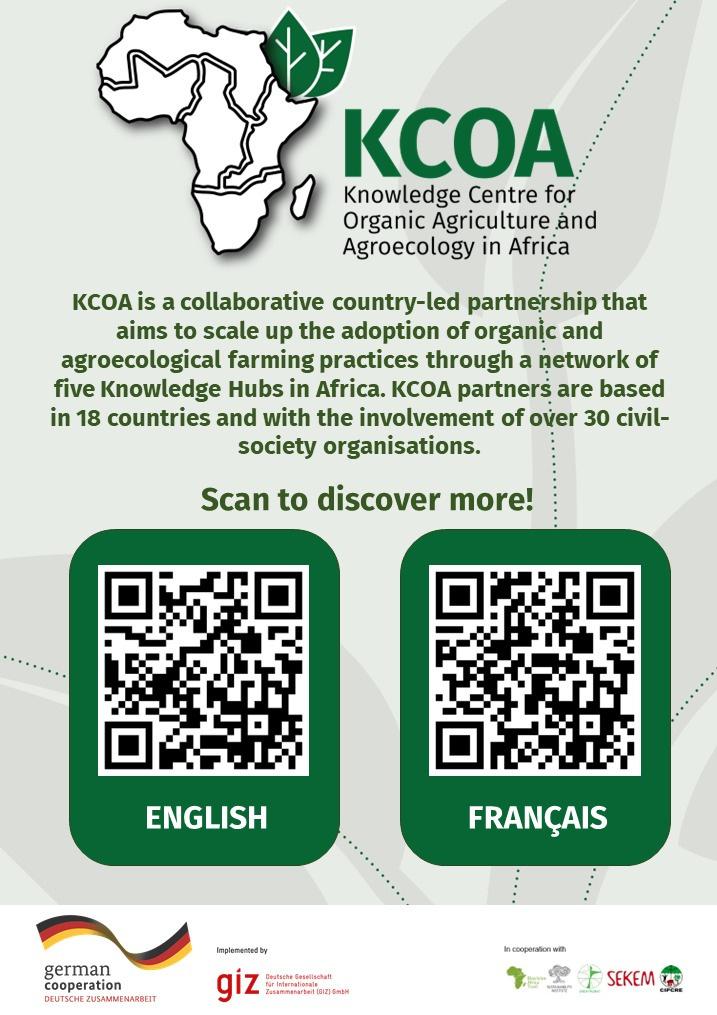
Youth Outlook FromHumbleBeginnings
toTransformative Change:TheStoryofBayaayaSpeciality CoffeeLimited
BySamWesamoyo,AfriFOODlinksYouthAmbassadortoMbaleCity,Uganda
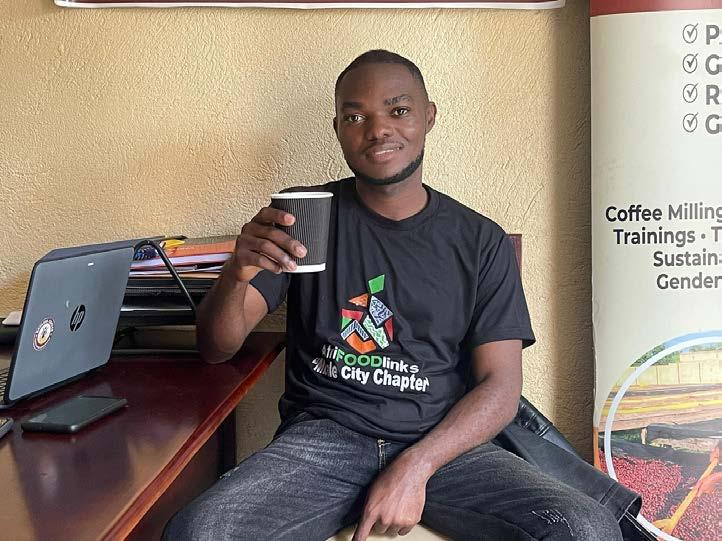
TheAfriFOODlinksprojectisrevolutionisingurbanfoodsystemsfromAfricato Europe,withaspecialfocusonempoweringyoungleadersthroughitsYouth AmbassadorsProgramme.Thisinitiativeharnessestheenergyandcreativityof youthtodrivesocialinnovationandfostercommunityengagementacross20 cities.Byamplifyingyoungvoices,AfriFOODlinksaimstoinspiretransformative actionsanddeepenunderstandingofurbanfoodsystemchallengesand opportunities.Readmoreabouttheprojecthere.
SamWesamoyo,AfriFOODlinksAmbassasorsharesastoryofthesteadygrowth andimpactofBayaayaSpecialityCoffeeLimitedunderthegreatleadershipof NanduduMeridah(Director)whosoughttousecoffeeasatooltofightdomestic violence,poverty,hungerandunemploymentamongyouth.
Caption:SameWesamoyoenjoyingacupofBayaayaSpecialityCoffee Credit:AfriFOODlinks
BayayaSpecialityCoffeeLimited
IntheheartofMbale,acityknownforits stunningbeauty,richculture,andthefamous Malewadelicacy,liesahiddentreasure—the Arabicacoffee,renownedworldwideforits distinctiveflavorandaroma.
WhilecoffeeisthemaincashcropoftheElgon region,itsproductionoftenbringsgender inequalitiestotheforefront.Women,particularly mothers,bearthebruntofthework,onlytosee mentakeoverwhenit'stimetosell.
NanduduMeridahgrewupinthisenvironment andwitnessedthesegenderdisparitiesfirsthand. Determinedtomakeadifference,andarmedwith adegreeinsocialscience,shefoundedBayaaya SpecialtyCoffeein2018;registeredasacompany in2022.
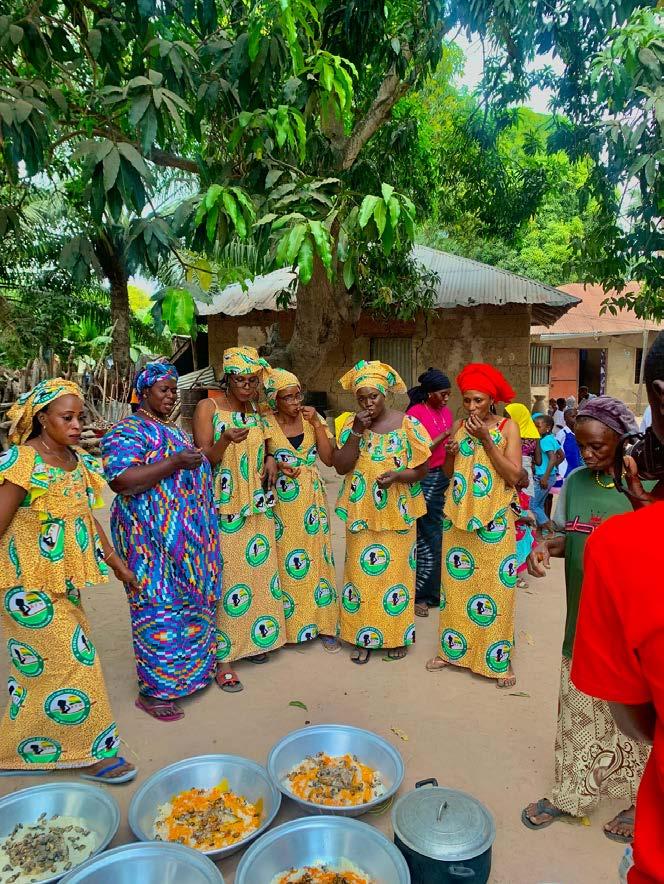
"Bayaaya"means"SisterhoodorBrotherhood"in Lugisu/Lumasaba,anamethatperfectlyreflects thecompany'smissiontoempowerwomenand youngmothersthroughcoffeefarming.
Caption:WomenempoweredthroughtheBayqayaSpecialityCoffeeLimited Credit:AbassMbe
Weaswomencametogethertousecoffeeasa tooltofightdomesticviolenceandpovertyin ourcommunity"saysMeridah.Thisinitiative contributestotheSustainableDevelopment Goals(SDGs)particularlySDG1,2and5.
Bayaayahasgrownrapidlyyetsteadilyoverthe yearsdespiteanumberofgender-related challenges,suchasthecommunityattaching coffeebusinesstomen;notbelievinginherand financialconstraintsasthecoffeebusinessis capitalintensive.
Nandudustartedwith85farmers,thenumbers grewto353farmersasofearly2023andnow morethandoublethat."Weareworkingwith615 women,withatotalof1000farmerswhoare supplyinguswithcoffee,"shesays.
Thecoffeepurchaseshavealsogrown significantlyresultinginconsiderablerevenue growth."Westartedin2018with300kgsof parchmentcoffeebutasof2023,wewereable tosellmorethan175tons,"saysNandudu.
Thecompanynotonlyprocessesandaddsvalue tocoffeebutalsocreatesemploymentforyouth andwomenasitemploystwofull-timestaffand themajorityofothersonaseasonalbasis."In season,weemploymorethan30womenthatdo handsortingofcoffee,and5menthatdoloading andcoffeedrying,"saysMeridah.Thecompany providestrainingongoodagriculturalpractices thathasledtoimprovedyieldsforthefarmers andensuredsustainabilityofthecoffeesupplies.
Thisgrowthhasbeenattributedtothesupportin termsofmentorship,grantsliketheAVSI foundation(scaleupgrant),challengefund,the risingwomangrant&theHi-innovatorbyNSSF, andapassionateteam.NanduduMeridah's journeywithBayaayaSpecialtyCoffeeLimitedisa testamenttothepowerofsettinggoals,staying committed,andmaintainingapositivemindset. Hersuccessstoryhasinspiredmanyyoung people,showingthatwithhardwork, perseverance,andawillingnesstolearn,theytoo canachievetheirdreams,nomatterhowhumble thebeginningsare.
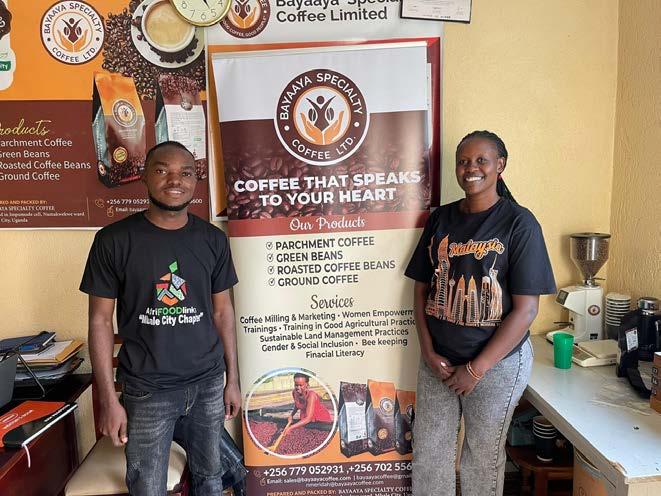
Caption:MarketingmaterialforBayaayaSpecialityCoffee Credit:SamWesamoyo
Research Roundup UnbundlingOrganicAgriculturefor ScientificIntervention
ByProfOlugbengaO.AdeOluwa,NetworkofOrganicAgricultureResearchersinAfrica
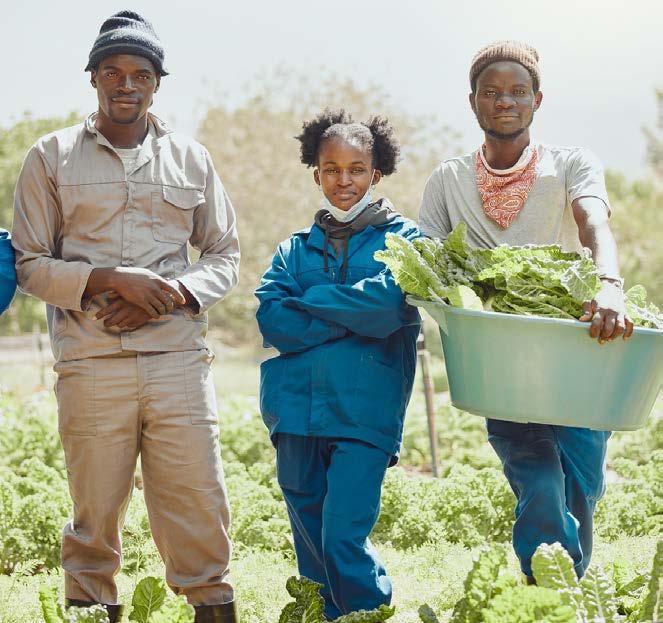
Organicagricultureisoneofthefastest-growingsectorsinagricultureworldwide,yetit remainsoneofthemostmisunderstood.Whileitpresentsnumerousopportunitiesfor scientificinnovation,thedevelopmentoforganicagricultureinAfricahaslaggedother regions.Thisgapisoftenattributedtoapoorunderstandingofitsprinciplesand practices.TofullyrealizethepotentialoforganicagricultureinAfrica,adeeperand moreaccurateunderstandingisessential,pavingthewayformoreeffectivescientific interventionsandsustainablegrowth.
Historyoforganics
Organicagriculturehasdeeprootsinancient farmingpractices,whereearlyfarmersreliedon naturalmethodstomaintainsoilhealthand biodiversity.However,the20thcenturysawthe riseofindustrialfarming,whichintroduced syntheticfertilisersandpesticides,leadingtoa declineintraditionalagriculturalmethods.The modernorganicmovementtookshapeinthe early1900sintheUnitedStatesledbypioneers likeJ.I.RodaleandSirAlbertHoward,who promotedsustainablefarmingpractices.Bythe 1960sand1970s,organicfarminggained momentum,drivenbygrowingconcernsabout environmentalandhealthimpacts.Today, organicagriculturefocusesonregenerative practicesthatfosterasustainablefoodsystem.
Earlyorganiccommunity
Initsearlystages,organicfarmingoperated withoutformalgovernmentaloversightor establishedmarkets.Farmersdependedon community-sharedknowledge,oftenpassed throughword-of-mouthorthroughinstitutions liketheRodaleInstitute.Duringthistime,organic farmingwasmoreofagrassrootsmovement, withnopremiumsfororganicproductsandno formalcertificationprocesses.TheUnitedStates organicmovementgainedmomentuminthe 1960s,drivenbyconcernsovertheenvironmental andhealthimpactsofindustrialagriculture. Issuessuchaspesticide-relatedhealthhazards, decliningsoilquality,waterpollutionandthe increasingfinancialstrainofsyntheticinputs fuelledthemovement.TheEuropeanorganic movementbeganbetweenthe1920sand1950s asareactionagainstindustrialfarming practices.AdvocatesinEuropestressedthe importanceofpreservingsoilhealthandusing farmingmethodsthatenhanced,ratherthan depleted,theland’sfertility.Theseearlyefforts laidthefoundationfortoday’sorganicfarming practices,whichemphasisesustainabilityand ecologicalbalance.
InAfrica,organicfarmingwastraditionallythe foundationofagriculture,basedonpracticeslike seedsaving,slash-and-burntechniques,and usingmanuretomaintainsoilfertility.These methods,inherentlysustainable,supportedthe land’snaturalcycleslongbeforetheformal organicmovementbegan.However,theindustrial revolutiondisruptedthisbalancewiththe introductionofchemicalfertilisersandpesticides. Thewidespreaduseofthesechemicalsnotonly causedpesticideresistance,leadingtotheneed forevenmorechemicals,butalsodegradedsoil qualityandharmedecosystems.Thisresultedin decliningproductivityandincreasedrelianceon syntheticinputs.Inresponse,manyAfrican farmershavereturnedtotheirorganicroots, focusingonregeneratingsoilhealthandrestoring ecosystems,fosteringamoresustainableand resilientapproachtofarming.
Organicagriculturedefinitions
Ageneraldefinitionstatesthatorganic agriculturereferstofarmingpracticesthatavoid theuseofsyntheticfertilisers,pesticides, geneticallymodifiedorganisms(GMOs),and otherharmfulchemicals.Instead,organicfarming reliesonnaturalmethodstoimprovesoilhealth, controlpestsanddiseases,promotebiodiversity andenhanceecosystemservices.TheEuropean Uniondefinesorganicagricultureassustainable agriculturesystemsrespectingtheenvironment andanimalwelfare,butalsoincludesallother stagesofthefoodsupplychain.UnitedStates organicregulationsdescribeorganicagriculture astheapplicationofasetofcultural,biological andmechanicalpracticesthatsupportthe cyclingofon-farmresources,promoteecological balanceandconservebiodiversity.Accordingto theFoodandAgricultureOrganizationCodex CommitteeonFoodLabelling,organicagriculture isaholisticproductionmanagementsystemthat promotesandenhancesagro-ecosystemhealth, includingbiodiversity,biologicalcyclesandsoil biologicalactivity.
TheInternationalFederationofOrganicAgriculturalMovements(IFOAM)Organics International(2008)definesOrganicAgricultureasaproductionsystemthatsustainsthe healthofsoils,ecosystemsandpeople,notingthatorganicagriculturereliesonecological processes,biodiversityandcyclesadaptedtolocalconditions,ratherthantheuseofinputs withadverseeffects.Itcombinestradition,innovationandsciencetobenefittheshared environmentandpromotefairrelationshipsandgoodqualityoflifeforallinvolved.
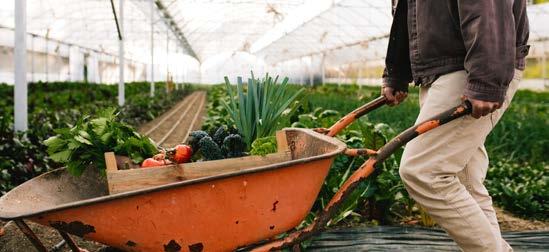
Principlesandcomponentsof organicagriculture
Organicagricultureisbasedonfourprinciplesof Care,Health,EcologyandFairness.Itconsistsof severalkeycomponentsthatensureitsintegrity andsuccess.Theseincludequalitycontroland certification,whichguaranteesthatfarming practicesmeetspecificorganicstandards.Labels playacrucialrolebyprovidingconsumerswith clearidentificationofcertifiedorganicproducts. Additionally,accesstoappropriatemarketshelps organicfarmersreachconsumerswhovalue sustainableandeco-friendlypractices.Lastly, accreditationensuresthatcertificationbodiesare recognisedandoperateaccordingto internationalstandards,addingcredibilitytothe entireprocess.
Thebenefitsoforganicagricultureare numerousandfar-reaching.Itpromotes improvedhumanhealthbyreducingexposure toharmfulchemicalsandpesticidesinfood. Animalwelfareisalsoprioritised,ensuringthat livestockareraisedinhumaneandnatural
conditions.Organicfarmingleadstoenhanced foodqualityandsafety,offeringconsumers healthierandmorenutritiousoptions.Italso supportslocaleconomiesbyencouragingthe growthofsmall-scalefarmsandbusinesses, fosteringsustainablelivelihoodsforfarmers. Moreover,organicpracticescontributeto climatechangemitigationbyreducing greenhousegasemissionsandenhancing biodiversity.Additionally,theyplayavitalrolein soilconservation,preservingtheland’sfertility andpromotinglong-termenvironmentalhealth.
Currentchallengesfororganic agricultureinAfrica
OrganicagriculturestakeholdersinAfrica encounternumerouschallengesthatrequire scientificinterventionstoensuresustainable developmentandfoodsecurity.The developmentofqualityorganicinputs, includingseedsandfertilizsers,iscritical,as manyfarmersstruggletofindreliablesources thatmeetorganicstandards.
Additionally,thereisapressingneedfor increasedawarenessandinformation disseminationaboutorganicand ecologicalagriculturepractices,whichcan empowerfarmerstoadoptthesemethods effectively.Accesstoorganicmarkets remainslimited,hinderingproducers’ability toconnectwithconsumersandobtainfair pricesfortheirproducts.
Effectivepestanddiseasemanagementisalso amajorchallenge,astraditionalmethodsoften fallshortinthefaceofemergingthreats, leadingtosignificantcroplosses.Advocacyfor organicagricultureisessentialtoinfluence governmentalpoliciesthatsupportthesector, butmanystakeholderslacktheresourcesto engageeffectively.Moreover,researchfocused onorganicpracticesisofteninsufficient, leavinggapsinknowledgeandinnovation.
Lastly,addressingissuesrelatedtoprocessing, storage,andvalueadditionwithintheorganic supplychain,alongsideeffectivesoil managementpractices,isvitalforenhancing theoverallviabilityandcompetitivenessof organicagricultureinAfrica.
Inconclusion,thereisasignificantopportunity forwin-winpartnershipsandcollaborationsin advancingorganicagriculturaldevelopmentin Africathroughscientificinnovation.TheNetwork ofOrganicAgricultureResearchersinAfrica (NOARA)welcomesandappreciates partnershipandcollaborationeffortsaimedat furtherdevelopingtheorganicsectoracross thecontinent.Byworkingtogether,stakeholders candrivesustainableagriculturalpractices thatbenefitboththeenvironmentand communitiesinAfrica.
NOARAwasestablishedtouniteandcoordinatescientificandtechnicalactivitiesofresearchers inthefieldoforganicandecologicalagriculture,focusingonAfrica.ItenvisionsAfricawithzero hunger,povertyeradicated,improvedlivelihoodsandsustainedecosystemsthroughinnovative organicandecologicalagricultureresearch.Itsmissionistogenerateanddisseminatesound evidence-basedscientificorganicagriculturalknowledgethatcanensurehealthyecological, fairnessandcareoforganicagricultureactorsinAfricaforsustainablelivelihoodand ecosystem,leadingtofoodsecurity,incomes,andsustainabledevelopment. LearnmoreaboutNOARAhere.
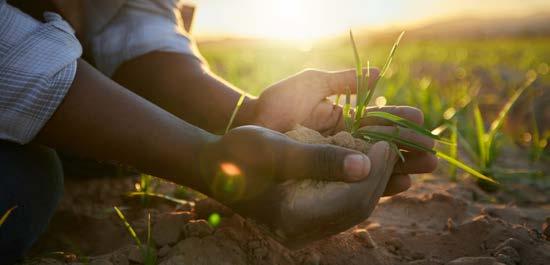
AboutNOARA
AddressingHungerandMalnutritionwith Climate-ResilientCrops
ByKaralynHingston,ExecutiveOfficer,FoodPlantSolutions
Learnmorehereorcontactthemdirectlyby
email.
FoodPlantSolutions(FPS)wasformedin2007,to addresshunger,malnutrition,andimprovefood securitybyenablingindividuals,communitiesand NGOstoidentifyandgrowhighlynutritiouslocal foodplants.LeveraginginformationfromtheFood PlantsInternationaldatabase,FPScreates educationalresourcesthatidentifyhighly nutritiouslocalfoodplants.Alongsideinformation onhowtogrowtheplantanditsuse,iskey nutritionalinformationthatexplainshowthese nutrientscontributetooverallhealthand wellbeing.Withastrategicfocusonclimateresilientfoodproduction,communitiescanmake informedchoicesonthefoodstheygrowandeat, whiletakingintoconsiderationthenutritional, economicandenvironmentalimpacts.
Ourimpact
Cameroon:PartneringwithHope4aBetter FutureFoundation(H4BF),“Yourmaterialshave beenusedbyover200womeninCameroon, taughtthemaboutnutrition,thevalueofdifferent crops,andhowtogrowtherightcropstomeet theirnutritionalneeds.Otherprojectstrain womentocultivatevegetables,butyour materialsgivethemthechoicetodecideto cultivatemoreofthosethatarehighinnutrition. Youdon’tjusthelpwomengrowfood;youmake themunderstandthevaluebeforegrowingthem. Thatisinnovative.”
Vietnam:Whatbeganastrialgardensintwo schoolsin2012expandedtotwoprovinces,14 schools,benefiting3000childrenand380 adults.Thestudentsenjoynutritiouslunches fromtheplantstheygrow,familiesreplicate schoolgardensathome,andmalnutritionhas beeneradicatedinsomeareas.
Uganda:AjointprojectinUgandalinkingFood PlantSolutionsRotaryActionGroup(FPSRAG),the RotaryClubofJinja(Uganda),andtheRotary ClubofSouthportLinks(UK)enabledFPSRAG resourcestobetranslatedintothelocaltribal language.Grandmothergroupssupportmore than500familiesbysharingsustainable agriculturaltechniqueslearnedfromFPSRAG translatedresources.Thisempoweredthewomen withskillstogrowfood,providinganutritiousdiet totheirchargesandfamilies.Thisprojectisnow beingexpandedtoallofUganda,withplans underwaytotranslatetheresourcesinto17ofthe mostcommonUgandanlanguages.
Withmorethan150publishedresourcesfor nearly60countries,FoodPlantSolutionshasan experiencedteamwhoknowhowto communicateandpromoteinformationabout highlynutritiouslocalfoodplantstolaypeople. Thestyleandpresentationoftheresourcescan addsignificantvaluetofood,nutritionand sustainabilitydevelopmentprojectsandallows decisionmakerstoact.
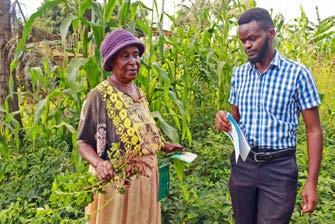
Caption:LearningfromGrandmotherGroups,Uganda Credit:FPS
Doing It For Yourself
DIYHomemadePestRepellents
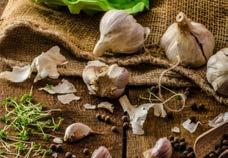
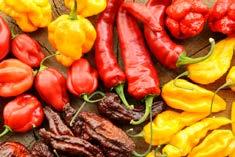


GarlicSpray
Ingredients
3clovesgarlic,minced
1litrewater
1teaspoonmilddishsoap
Instructions:Sprayonplantstorepelaphids,spider mitesandotherpests.
HotPepperSpray
Ingredients
1cuphotpeppers,chopped
1litrewater
1teaspoonmilddishsoap
Instructions:Combineingredientsandsprayonplants torepelaphids,whitefliesandotherpests.
NeemOilSpray
Ingredients
2tablespoonsneemoil
1litrewater
1teaspoonmilddishsoap
Instructions:Mixandsprayonplantstocontrolawide rangeofpests.
SoapSpray
Ingredients
1tablespoonmilddishsoap
1litrewater
Instructions:Spraythemixtureonplantstocontrol aphids,mealybugsandothersoft-bodiedpests.
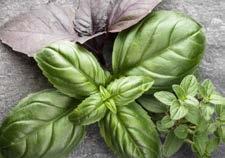
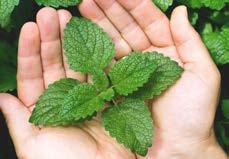
Precautions:
Alwaystestasmallareaoftheplant beforeapplyinghomemade pesticides.
1. Wearprotectiveclothingandeyewear duringapplication.
2. Avoidsprayingduringpeaksunhours topreventplantdamage.
4.
3. Keephomemadepesticidesaway fromchildrenandpets.
TipsforUsingHomemade Pesticides:
Useaspraybottleforeasy application.
1. Prepareyourpesticidemixturesjust beforeusetoensurefreshness.
2. Storeanyleftoverpesticidesinlabeled containers.
4.
3. Rotatebetweendifferenttypesof pesticidestomaintaintheir effectiveness.
BasilRepellent Ingredients
1cupfreshbasilleaves
1litrewater1teaspoon
Milddishsoap
Instructions:Blendandsprayonplantstorepelaphids andmites.
MintRepellent Ingredients
1cupfreshmintleaves
1litrewater
1teaspoonmilddishsoap
Instructions:Mixandspraytorepelaphids,spider mitesandants
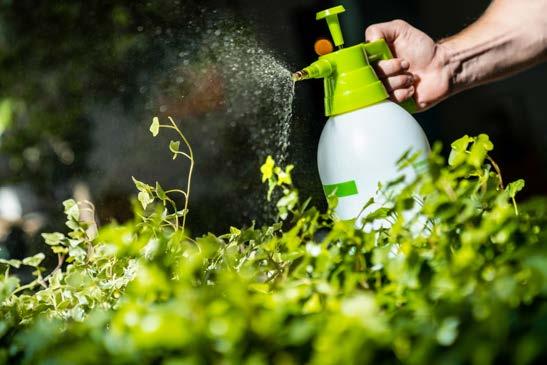
Reminder:Correctlyidentifythepestsbeforeapplyinghomemadepesticides.Monitoryour gardenregularlyandadjustyourpestcontrolmethodsasnecessary.
Resources & Events
Quickreads
ThekeynoteaddressdeliveredattheThousandYouthSummitonAgroecology andFoodSystemsheldfromOctober14to16,2024,inAddisAbaba,Nnimmo Bassey,Director,HealthofMotherEarthFoundation(HOMEF),explorestheroleof indigenousknowledgeinpromotingresilientfoodsystemsinAfrica.Readthe addresshere
Apre-COPmessagewarningthat“Humanityis“ontheprecipice”ofshattering Earth’slimits,andwillsufferhugecostsifwefailtoactonbiodiversityloss”.Read morehere.
AhistoricjudgementmadeinSouthAfricabytheSupremeCourtofAppealto setasidecommercialapprovalofGMdrought-tolerantmaize.Readmoreabout theAfricanCentreofBiodiversity’svictoryhere.
Callforapplications
InApril2025,duringthe3rdGlobalNyéléniForum—themostimportanteventof theglobalmovementforfoodsovereignty,systemictransformation,andjustice forall—theNyéléniVirtualGallerywillbelaunchedasaspaceforcommitted artistsengagedinpopularstruggles.Weinviteartistsfromallbackgroundsto submittheirworksinvariousformatsbyJanuary31,2025.Readmorehere
UrgentActionFund-Africaisafeminist,pan-African,RapidResponseFund committedtotransformingpowerrelationsthroughresourcingAfricanfeminists andwomn’shumanrightsdefendersandtheirformationsasanactofsolidarity. Moreinformationcanbefoundonourwebsite:https://www.uaf-africa.org.They arelookingforanewBoardmember.Moreinformationhere.
Mustwatch
Thedocumentary"TheGreenVein"hasbeenreleasedtothegeneralpublicafter aseriesofscreeningsinmorethan20festivalsthroughouttheworld,winning fourofthemandreceivinghonourablementionsintwoothers.Thefilmemerged fromtheFoodSystemsCaravanproject,whichwascoordinatedbyFiBL Switzerland,andportrayspositiveandinspiringexamplesofagroecological initiativesinWestAfrica.Watchithere.
ifoamsouthernafrica
www.khsaonline/isan-magazine
